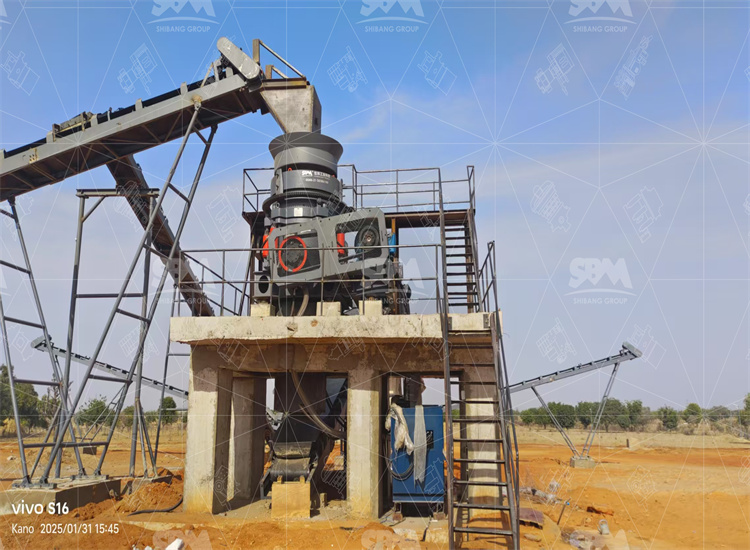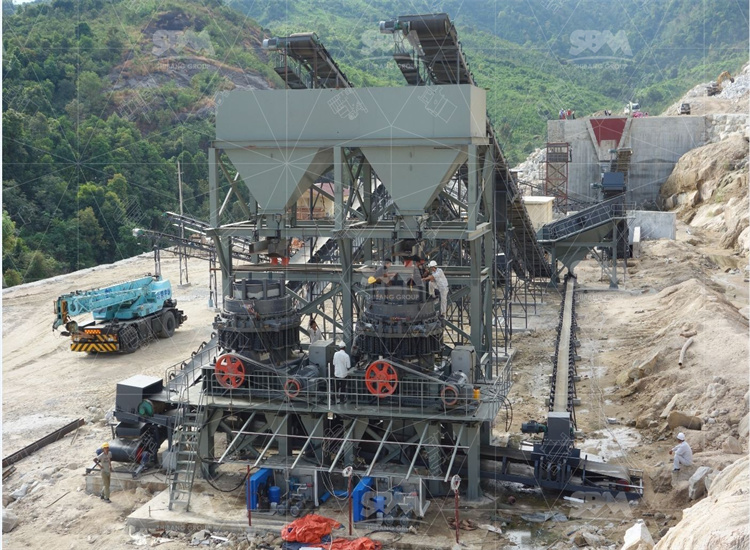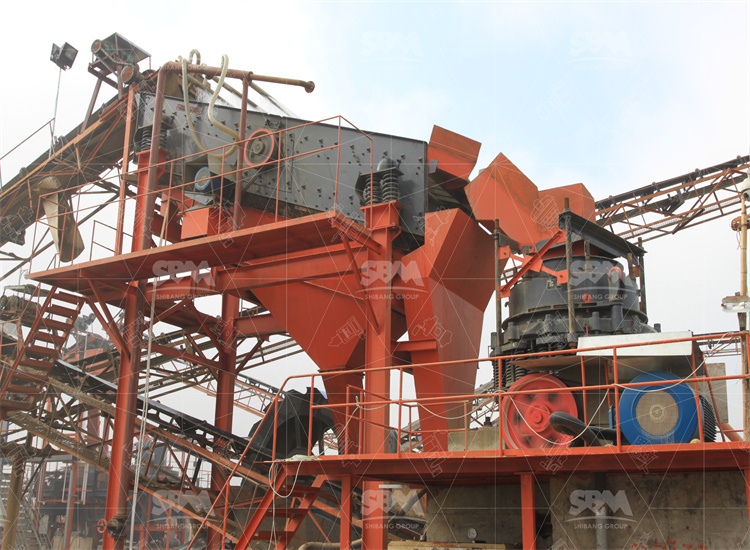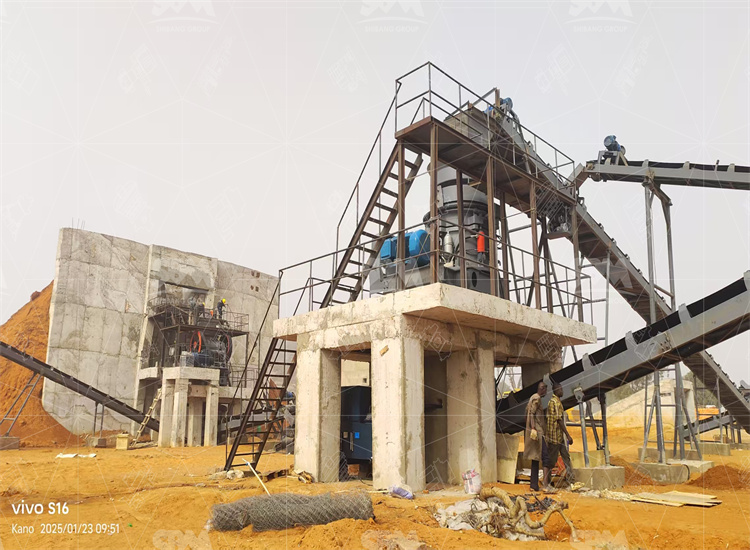Choose the right cone crusher by matching worksite conditions, feed characteristics, and lifecycle economics. This guide compares hydraulic and spring cone crushers, explains core tech parameters, shows measured run-data, and gives clear selection advice for SBM mining projects.
A cone crusher reduces rock by compressive force between a fixed mantle and a moving concave. Feed enters the top, the mantle gyrates, material is crushed and drops out the bottom at the closed side setting (CSS). The cycle repeats until target size is reached. This is the same physical principle across spring and hydraulic styles, but the overload protection and setting adjustment methods differ.

Closed side setting (CSS) — the smallest gap between mantle and concave — controls product size. Typical CSS ranges run from 6 mm to 75 mm for industrial cone crushers. A 2–3 mm CSS change can alter product grading and capacity noticeably. Eccentric throw and eccentric speed affect breakage pattern and crushing ratio. Crushing ratio usually falls between 10:1 and 40:1 depending on chamber and rock type. Motor power must match torque needs and expected throughput; for medium plants, motors from 75 kW to 560 kW are common. Correct matching reduces wear and lowers energy per tonne.
Spring cone crushers use mechanical springs as an automatic tramp release. When uncrushable material enters, springs compress and allow a temporary cavity opening, then reset. Hydraulic cone crushers use hydraulic cylinders and valves for setting, clearing and overload protection. Hydraulics enable fast, remote CSS adjustment and automatic clearing, plus controlled release force. Each system has trade-offs: springs are simple and robust; hydraulics enable automation and safer clearing.
Modern cone crushers pair an AC motor with gearboxes and variable-speed drives for process control. Hydraulic crushers often integrate PLC or DCS controls for automated CSS changes, pressure monitoring, and alarms; spring units tend to be more mechanical with fewer electronics. Automation reduces downtime and keeps particle size stable under varying feed, but requires planned maintenance for hydraulic circuits and sensors.
Capacity depends on feed size, CSS, chamber type and rock abrasivity. Representative ranges from industry data: feed size up to 300 mm for some models; throughput from 12 t/h to 700 t/h for common spring cone sizes; hydraulic multi-cylinder models often serve 100–650 t/h ranges. Energy consumption commonly sits between 3–10 kWh/ton for secondary/tertiary crushing in typical aggregates operations, but varies with rock strength and liner condition. Liner wear rate correlates with rock abrasivity and correct chamber selection. Regular liner profiling extends life.
Field records show planned maintenance intervals for cones at 3–12 months for liner change depending on tonnage and rock; hydraulic systems need fluid checks and seals inspection every 500–2000 operating hours. Typical unplanned failure rates are low if liners and lubrication are managed; recorded downtime is usually under 2–5% of operating hours in well-run sites. Energy use, oil temperature, bearing vibration, and pressure spikes are key indicators to monitor.

Choose hydraulic if: site needs frequent CSS changes; remote tuning and automated clearing are priorities; tramp-metal incidents require fast, reliable clearing. Choose spring if: simplicity, low initial CAPEX, and ease of field repairs matter most. For abrasive feed, select coarse cavities and harder liner alloys; for fines, choose fine cavities and tighter CSS. Always match motor kW to expected peak throughput plus 15% margin.
Below table summarizes practical parameter ranges used by engineers during selection.
| Parameter | Spring cone | Hydraulic cone |
|---|---|---|
| Feed size (mm) | ≤300 | ≤300 |
| Capacity (t/h) | 12–700 | 36–650 |
| CSS (mm) | 6–75 | 6–75 |
| Motor power (kW) | 75–560 | 90–560 |
| Maintenance interval | 3–12 months | 3–12 months (plus hydraulic checks) |
Case A — Northern granite quarry, Inner Mongolia, 2022. Challenge: hard, high-silica granite, variable feed up to 280 mm, customer needed high throughput and stable aggregate gradation for asphalt. Solution: SBM supplied a multi-cylinder hydraulic cone (model ZH-200*), matched to a 315 kW motor and a coarse-to-medium chamber. Design included staged screening and a PLC for CSS autotune. Outcome: capacity rose 28%, fines reduced 3 percentage points, liner change interval extended by 20%. Client feedback: easier tuning, fewer shutdowns during tramp events, satisfaction with production ramp.
Case B — South China limestone plant, 2023. Challenge: abrasive limestone with sticky fines, remote location, limited maintenance crew. Solution: SBM provided a heavy-duty spring cone (model SC-150) with robust liner alloy, simplified mechanical clearing and local spare kit. Outcome: reliable 24/7 operation at design tonnage 180 t/h, simple on-site repairs lowered spare parts lead time. Client feedback: low-tech reliability praised during monsoon season, maintenance predictable and affordable.

Follow a structured plan: pre-check civil foundation tolerances; align motor and gearbox; set lubrication system per manual; verify electrical protections; perform dry run with empty chamber; then staged feed ramp-up. For hydraulics: bleed circuits, check relief valves and sensor calibrations. Keep an on-site parts kit: liners, eccentric bushes, seals, drive belts. Train operators on daily checks: oil level, vibration, inlet chute feed pattern. Scheduled inspections prevent most failures.
Hydraulic variants cost more upfront than spring units. However, faster setup, reduced downtime and higher uptime often improve ROI where production flexibility and safety matter. Spring crushers have lower initial cost and simpler upkeep. Compute ROI by modeling downtime risk, liner wear rate, energy per tonne, and expected throughput. Use conservative inputs for tonnage and wear to avoid optimistic bias.
Q1: Which crusher gives lower operating cost? A: It depends. If your site has stable feed and low need for CSS changes, spring cone often yields lower OPEX. If you need frequent tuning and quick clearing, hydraulic units lower hidden costs from downtime. Monitor energy, liner life and downtime to judge true OPEX.
Q2: How to size CSS for required product? A: Start from target product spec and back-calculate CSS using manufacturer curves. Use a trial CSS adjustment of 2–3 mm to validate product gradation. Ensure feed top-size < 1.25 × feed opening. Record particle distributions before finalizing CSS.
Q3: What maintenance items reduce failure rate most? A: Daily lubrication, liner profile checks, hydraulic oil cleanliness, and vibration monitoring. Replace liners on schedule. Keep spare onsite for critical wear parts.
SBM stance: prefer hydraulic cone crushers for medium-large mines that value automation, fast clearing and remote operation. Choose spring cone crushers where simple ruggedness and low initial cost are decisive. Always validate selection with a short field trial, check real rock abrasivity and profile the feed. We stand behind our recommendations and can supply site-verified curves and commissioning support for your project.

1) How quickly can SBM tune a hydraulic cone on site? We can complete mechanical install and control tuning within 3–7 days after civil and electrical hook-up, depending on site logistics. Quick autotune sequences reduce commissioning time, and our engineers train local staff.
2) Can I retrofit a spring cone to hydraulic? In some models, hydraulic retrofit kits exist, but economics vary. We advise evaluation: compare kit cost, downtime and expected benefits before retrofit.
3) What guarantees do you offer on throughput? SBM provides performance curves and a guaranteed acceptance test. We base guarantees on measured feed properties and agreed operating conditions; deviations require re-test or acceptance adjustments.
Choose based on site needs: hydraulics for control and safety; springs for simplicity and lower upfront cost. Match CSS, chamber, speed and motor to feed and product targets. Rely on measured run-data and planned maintenance to hit production goals. Contact SBM for a site audit and data-backed selection.
Whatsapp:+8617329420102
Email: [email protected]
Address: No. 1688, Gaoke East Road, Pudong new district, Shanghai, China.
Online Service : Get Price
We value your feedback! Please complete the form below so that we can tailor our services to your specific needs.
